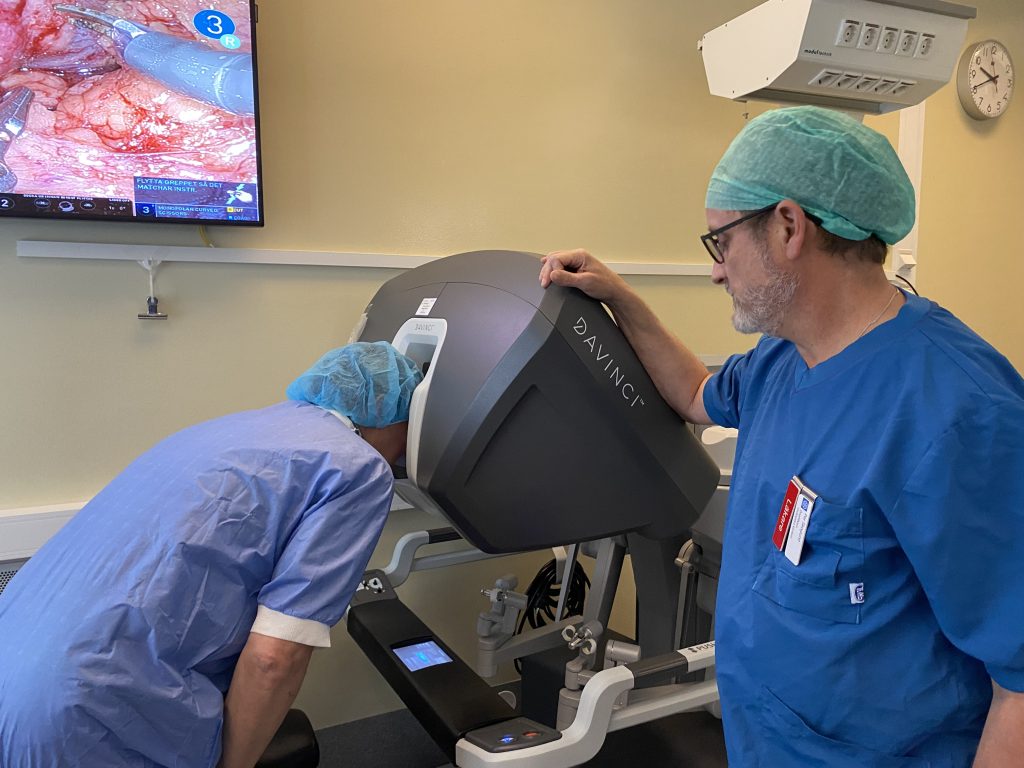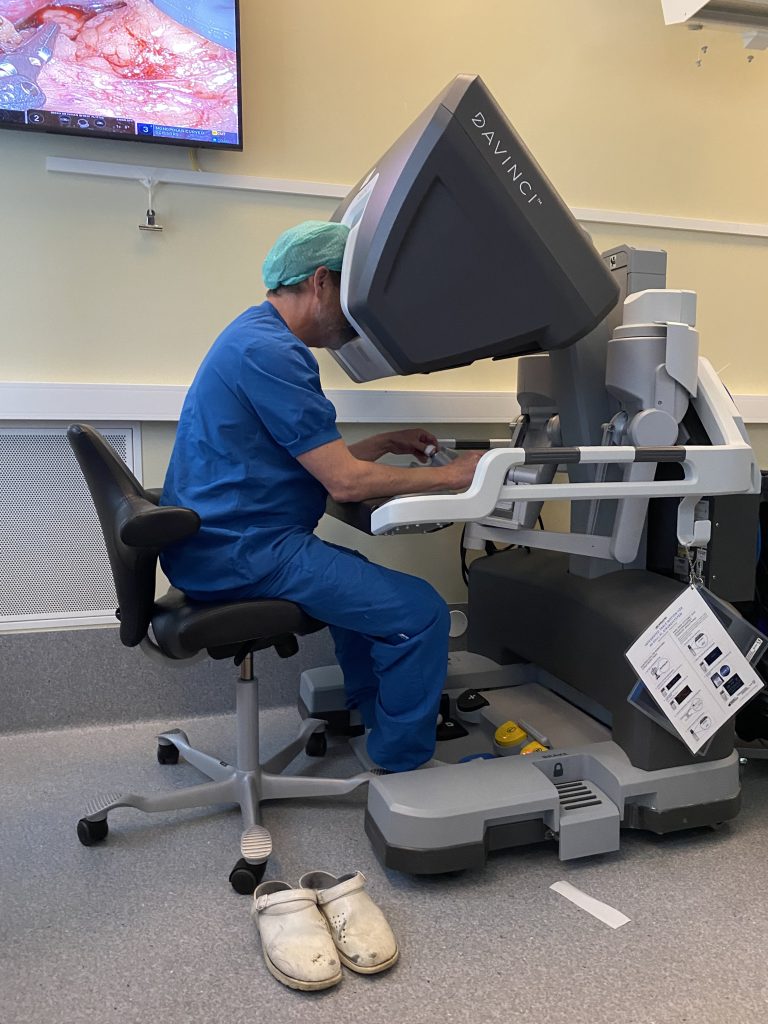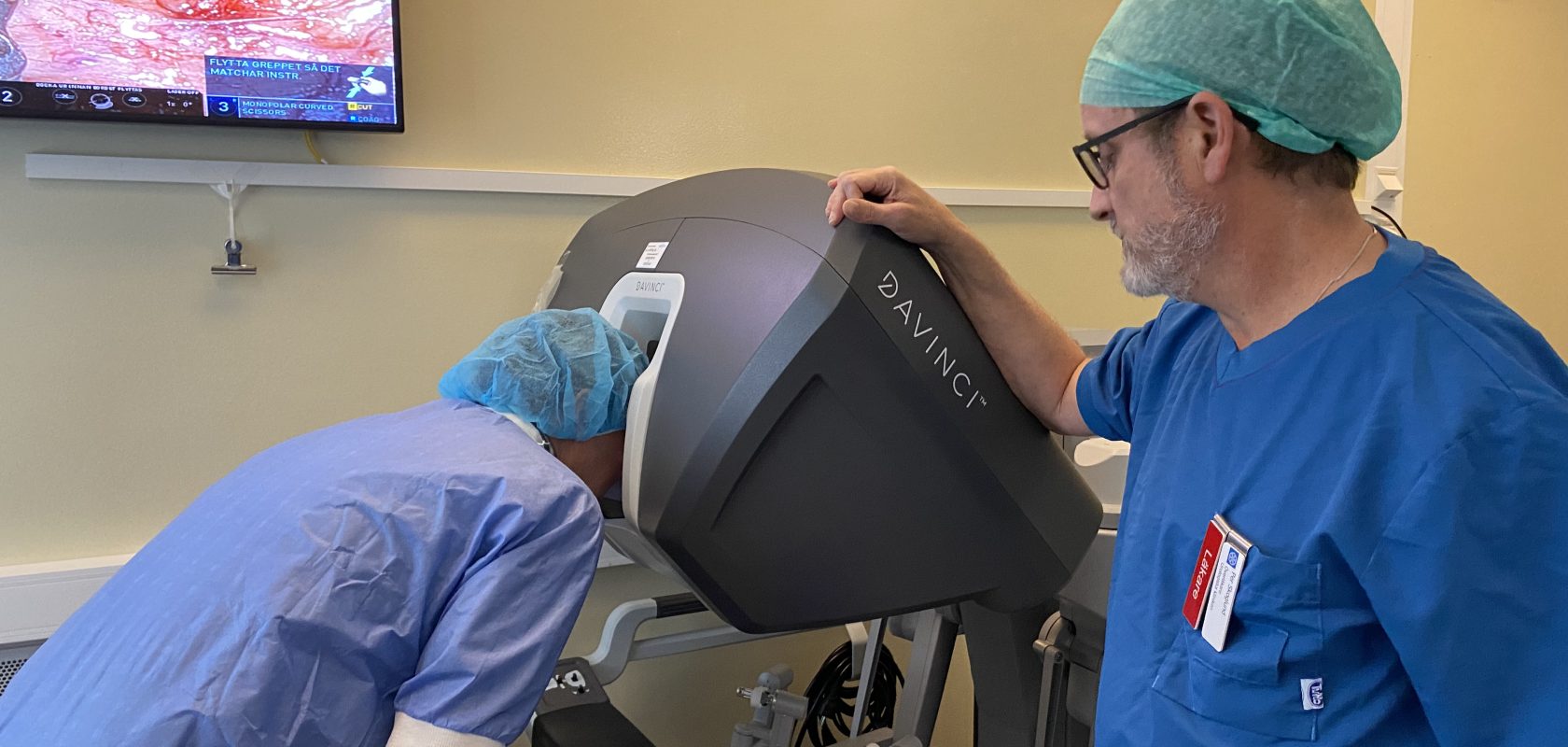East Sweden Medtech’s study visit to Linköping University Hospital provided a close-up view of how robotic surgery works at Anopiva.
– To be the clear link between healthcare, research, and innovators, we need to have insight into healthcare’s needs, and this was a very rewarding day, says Terese Källberg, ESMT’s operational manager.

A concentrated effort is ongoing around the patient, who is lying anesthetized on the table in the operating room. The woman, who is in her 60s, is about to have a tumor removed by the arms of the Da Vinci robot. The tumor is located on one kidney, and with the help of the technology, Chief Physician Per Skoglund can turn and twist the kidney, thereby accessing the tumor much more easily and at the same time much more advancedly than with open surgery.
– Apart from the costs, there are really only advantages to robotic surgery,” says Per. “Not least for the patient, who experiences a significantly smaller procedure and therefore recovers faster and can leave the hospital after just a day or so, often with only Panodil for pain relief instead of stronger medications.
The care time after kidney surgery has been halved thanks to the technology, and the faster recovery leads to shorter sick leave for the patient. Another advantage is that it is possible to perform surgical procedures later in life.
– The reduced operation trauma means that we can now also operate on patients who have fewer resources to handle large operations, says Per.
The first robot came to Anopiva (anesthesia-operation-intensive care) in 2007, and Linköping University Hospital was then the fourth hospital in Sweden to gain access to the technology. Today, nearly 95 percent of urological surgery is performed with the help of robots.
Operates via 3D image

Per takes off his clogs and sits in the actual control cabin. He leans over a small screen where he sees the part of the abdomen he is going to operate on in a clear 3D image. With hands and feet, he controls the robot while talking into a microphone with the team working around the patient. On TV screens in the operating room, the staff can follow everything that happens.
The procedure goes in the number of minutes that Per planned. Fast and efficient. The possibilities with the technology are almost endless, yet the adjacent room stands empty, with an idle robot.
The clinic’s needs are about personnel resources.
– It’s partly a personnel issue, partly a planning issue,” says Per Skoglund. “Right now, the equipment is not being used to its full potential. In an ideal world, we would have more of an ‘airplane thinking’ which means that the robot stands still as little as possible, but that doesn’t work with the current personnel situation.”
In addition, more clinics want more time for robotic surgery. The surgical clinic and the gynecological clinic are two examples.
Smoother in every step
To find a solution to the nurse shortage, the anesthesia department at Anopiva started a project after New Year that involves streamlining the routines for prostate cancer operations, radical prostatectomy.

– The work goes smoother at every step,” says Sara Loumala, anesthesia nurse. Everyone knows exactly what to do and where to stand in the room during an operation. We have thereby shortened the time from what we call knife in, to knife out. Additionally, preparations for an operation go faster. This has meant that we can operate on three patients a day, instead of two, and that the care queues have been significantly reduced.”
A clear example of how needs create solutions.
– It is very useful for us to go out and see what the employees’ everyday life looks like,” says Anders Brodin, East Sweden Medtech’s project manager. The more we learn, the easier it becomes to understand the business, and we benefit greatly from this in meetings and interviews with healthcare staff.
Close view of healthcare

The study visit continued with a tour of various departments, including the intermediate care unit CIMA. There, intensive care nurse Katarina Solnevik talked about the newly started department, which receives patients who do not need care in intensive care but are not ready to be moved to a ward.
– The purpose of this day was to create a close-up view of healthcare and gain a deeper insight into various needs where we from ESMT can participate and support, concludes Annika Bergström, project manager.
